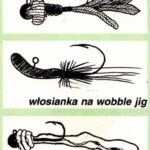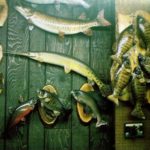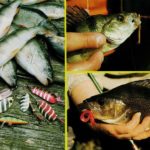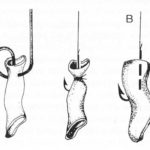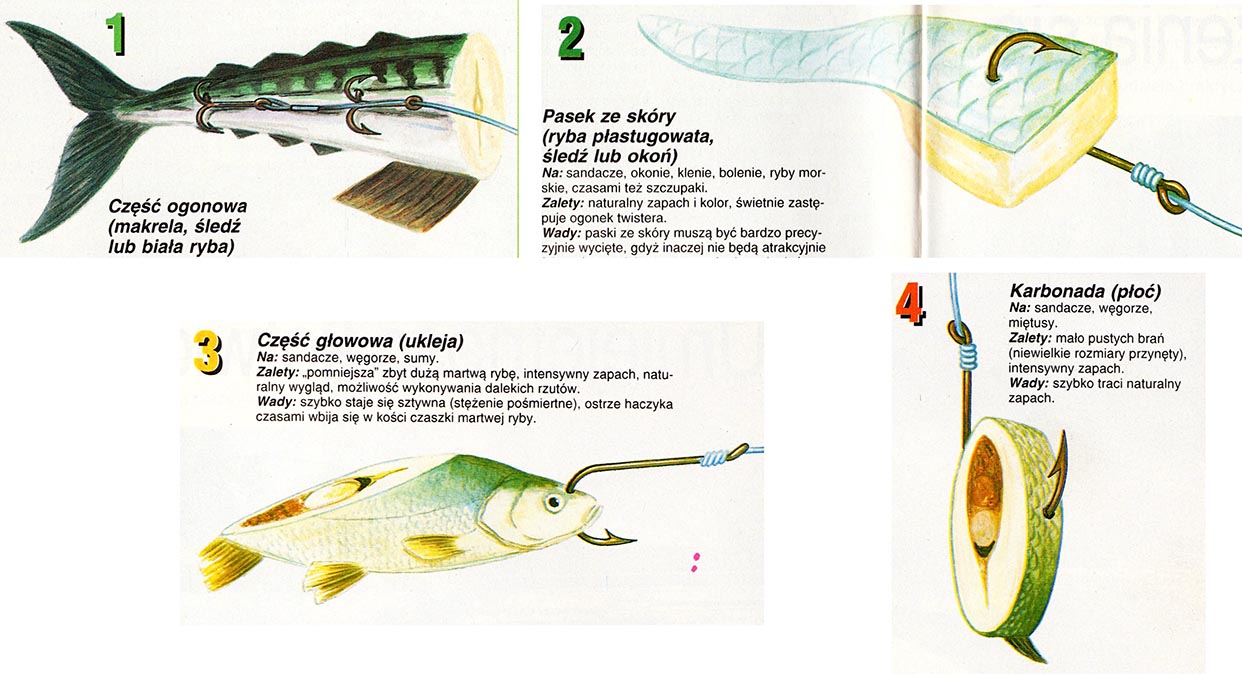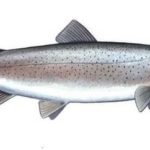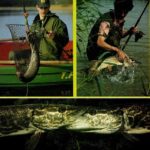 Krótszy dzień, mgliste, chłodne wieczory i ranki – często z pierwszymi przymrozkami. „Wisząca” w powietrzu melancholia i jakiś przygnębiający w środku żal za odeszłym niedawno letnim klimatem. Chcemy czy nie – mamy już pełnię jesieni. A wędkarska jesień to przede wszystkim połowy drapieżników. W rzekach nizinnych i „spokojnych” akwenach – szczupaki, okonie i sandacze. W wodach górskich – tłuste tęczaki i potężne głowacice. Wszystkie wymienione drapieżniki, niezależnie od tego czy przebywają w podobnych czy różnorodnych warunkach środowiskowych, charakteryzuje wspólna cecha – wzmożona aktywność i niesamowita żarłoczność, by zasilić potrzebujący energii organizm. Działa tu odwieczny mechanizm gromadzenia zapasów przed nadchodzącą zimą. Jesień w jeziorach względem lądu następuje ze znacznym opóźnieniem. Panuje tu pewna reguła – im większy jest zbiornik tym woda stygnie w nim wolniej, a tym samym proces obumierania roślin postępuje łagodniej. Najdłużej w niezmienionej formie jeziorowych głębi utrzymują się zielone podwodne łąki, gdy w tym samym czasie, płytki litoral i oczerety żółcą się już i szeleszczą.
Krótszy dzień, mgliste, chłodne wieczory i ranki – często z pierwszymi przymrozkami. „Wisząca” w powietrzu melancholia i jakiś przygnębiający w środku żal za odeszłym niedawno letnim klimatem. Chcemy czy nie – mamy już pełnię jesieni. A wędkarska jesień to przede wszystkim połowy drapieżników. W rzekach nizinnych i „spokojnych” akwenach – szczupaki, okonie i sandacze. W wodach górskich – tłuste tęczaki i potężne głowacice. Wszystkie wymienione drapieżniki, niezależnie od tego czy przebywają w podobnych czy różnorodnych warunkach środowiskowych, charakteryzuje wspólna cecha – wzmożona aktywność i niesamowita żarłoczność, by zasilić potrzebujący energii organizm. Działa tu odwieczny mechanizm gromadzenia zapasów przed nadchodzącą zimą. Jesień w jeziorach względem lądu następuje ze znacznym opóźnieniem. Panuje tu pewna reguła – im większy jest zbiornik tym woda stygnie w nim wolniej, a tym samym proces obumierania roślin postępuje łagodniej. Najdłużej w niezmienionej formie jeziorowych głębi utrzymują się zielone podwodne łąki, gdy w tym samym czasie, płytki litoral i oczerety żółcą się już i szeleszczą.
Dzięki dobroczynnej jesiennej cyrkulacji, gdy wody mieszają się w całej swojej objętości, dotleniając przydenne warstwy, zwierzęta wodne zamieszkujące dno i przemieszczające się do głębszych partii wody ryby zachowują jeszcze długo niezłą kondycję. Późną jesienią sieja i sielawa rozpoczynają tarło. Skorzystają z tego faktu drapieżniki – głównie szczupaki „lokując” się w okolicach ich tarlisk.
Tak więc, mówiąc obrazowo „podwodna fabryka”, wszelkiego życia przenosi się w tym okresie w głąb wody, w strefy przydenne, byle dalej od nadchodzącego od lądu chłodu.
I do takich właśnie uwarunkowań środowiskowych należy się przystosować wybierając się na październikowe łowy drapieżników. Przerzedzona roślinność miękka sprzyja wędkowaniu, mniej jest zaczepów, mamy większy dostęp do rybich stanowisk, a i ziele jest o tej porze bardziej kruche niż jeszcze niedawno latem.
Wiadomo wszystkim od dawna, że październik to złote czasy dla spinningistów. I próżne byłoby w tym miejscu pisanie o tym np. żeby przynęty prowadzić jak najwolniej, koniecznie dołem, by były one większych rozmiarów etc. Bo każdy wytrawny spinningowiec to konserwatysta, i tak zrobi to po swojemu, wedle własnych upodobań, gromadzonych od lat licznych doświadczeń, często przyzwyczajeń. A wszystko po to, by trafić w gust wygłodniałego właściciela uzębionej żuchwy, pasiastego garbusa, czy ewentualnie przebiegłego rabusia sandacza. Cóż, żądza emocji i wzruszeń jest wielka i nie ma tu skrupułów.
Dla zainteresowanych, jednak kilka przemyśleń autora na temat jesiennego spinneru. Mało docenianym, często przeoczanym prowokującym drapieżniki jest tempo prowadzenia przynęt. I nie chodzi tu o hołdowane przez niektórych wędkarzy tzw. prowadzenie skokami, przerywania skręcania by błystka opadała na dno, po czym szybki zryw do góry. Wiadomo, że szczupaki i nie tylko żywo reagują na wszelkie zmiany w swoim najbliższym otoczeniu. Należy więc nie utrudniać im tego, a tym bardziej dodawać jak najwięcej bodźców do zainteresowania.
Z moich spostrzeżeń wynika, że gwałtowne skoki prędzej je płoszą, aniżeli prowokują do ataku. Osobiście lansuję zasadę, by nie szarpać, zrywać i „upuszczać” tego co zapięte do agrafki, a raczej naprzemiennie przyspieszać i spowalniać tempo skręcania żyłki. Zatrzymywanie i opuszczanie blach na dno, natomiast wyśmienicie wabi sandacze. Inna ważna kwestia. Przynęta musi pracować nienagannie.
